The Dik Dik belongs to a group of tiny antelopes that live throughout regions of Africa, of which there are four species, which make up the taxonomic genus Madoqua. Most of them stand just a foot tall. The different species are the Silver, Salt’s, Gunther’s, and Kirk’s species. Read on to learn about the Dik Dik.
Description of the Dik Dik
All four species of these animals are tiny compared to other antelope species. They have slender legs, and slightly hunched backs, with their hips taller than their shoulders. They have elongated nostrils, though not as drastically as the Saiga antelope.
Males grow short horns, which emerge from their heads quite straight and point slightly backwards. Their horns are just a few inches long, and normally grow to a maximum of 3 inches. Most of these tiny antelope are around a foot tall, and weigh about 10 pounds or so.
Interesting Facts About the Dik Dik
These little antelopes have several different adaptations and traits that make them unique. Learn more about each species below.
- Kirk’s Dik Dik – This species is the largest of the four, and the largest individuals stand at a whopping foot and a half tall! Even the largest of the species is incredibly small. Researchers recognize six different Kirk’s subspecies throughout their range.
- Gunther’s Dik Dik – This little antelope lives in East Africa. They have tufts of fur that point up from the tops of their heads. In females, which lack horns, this fur tuft gives them a unicorn-like appearance.
- Silver Dik Dik – These are the smallest of the four species. Most individuals stand no more than a foot tall at the largest. They also weigh just five or six pounds. As their name suggests, Silvers have silvery fur along their backs and sides.
- Salt’s Dik Dik – Traveler and diplomat Henry Salt discovered this species in 1811 in Abyssinia. Salt’s is closely related to the Silver, and they even share a subgenus. Scientists recognize five different Salt’s subspecies.
Habitat of the Dik Dik
These little antelopes usually live in semi-open areas with plenty of low vegetation to hide in. However, the shrubbery cannot be too overgrown, because the antelopes cannot spot predators.
Some of their preferred habitats are thornbush, savanna, grassland, and woodland edges. They primarily live in arid regions with low rainfall, and their long snouts help them disperse heat during the highest temperatures in these desert-like habitats.
Distribution of the Dik Dik
The different species have different ranges and distributions. All four species live in different regions of Africa. The Gunther’s species lives in East Africa, including parts of Somalia, Ethiopia, Uganda, Kenya, and Sudan.
Salt’s species also live throughout parts of Ethiopia and Somalia. The Kirk’s species ranges through some areas in Somalia, Kenya, Angola, Namibia, and Tanzania. Finally, the Silver species lives in some regions of Somalia and Ethiopia.
Diet of the Dik Dik
All four species are herbivores, which means they eat plants. They are primarily browsers, and eat leaves, buds, stems, and other parts from trees and shrubs. However, they do graze on grasses occasionally.
Because they live in arid regions, it pays to feed on leaves because they have higher water content. Even though they are smaller than other antelopes, these must eat a lot of food in relation to their body size. Some species are pickier about the plants they eat than others are.
Dik Dik and Human Interaction
Humans hunt all four species of animals. Though they hunt the antelopes for their meat, one of the primary motivations for hunting these little mammals is their hide. People use their hides to create suede gloves, despite the fact it takes an entire animal to produce a single glove!
Habitat destruction also impacts these little antelopes. However, their populations are healthy, and the IUCN lists three of the four species as Least Concern. They lack enough information to conclusively list the Silver species’ conservation status.
Domestication
Humans have not domesticated Dik Diks in any way.
Does the Dik Dik Make a Good Pet
No, these animals do not make good pets. Even though they are quite small, they are still wild animals and do not make good household pets. In many places, it is illegal to own one as a pet.
Dik Dik Care
Different zoos across the world house these little antelopes in their collections. Some species live in small herds, depending on their natural social structure. Their enclosures are not quite as large as some other antelope species, and contain a variety of shrubbery and hiding places for these shy animals.
Zoos feed these animals a variety of fresh plants, hay, and pelleted herbivore feed. They also provide a number of edible plants in the antelope’s enclosure for them to forage on.
Behavior of the Dik Dik
All of the species are quite shy, and spend much of their time hidden in shrubbery. They are diurnal, or active during the day. Most of their foraging occurs during the early morning and late afternoon.
Their social structure varies from species to species. Some live in small herds, others live in pairs or family groups, and others live alone outside of the breeding season. Many species defend territories, and use urine or feces to mark the boundaries of their territories.
Reproduction of the Dik Dik
Most species breed twice per year, and some eject the previous fawn when their next is born. Their gestation period lasts between five and a half and six months. Females give birth to a single fawn, which looks like a miniature version of an adult.
After three or four months the female begins weaning the fawn off her milk. The fawns reach adult size when they are about seven months old, and breed when they are a year old.

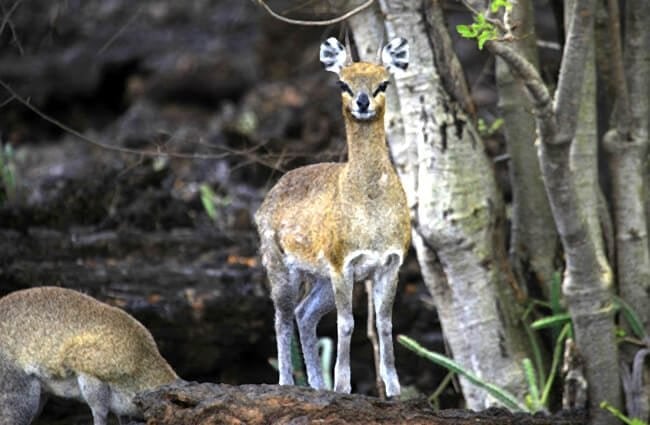
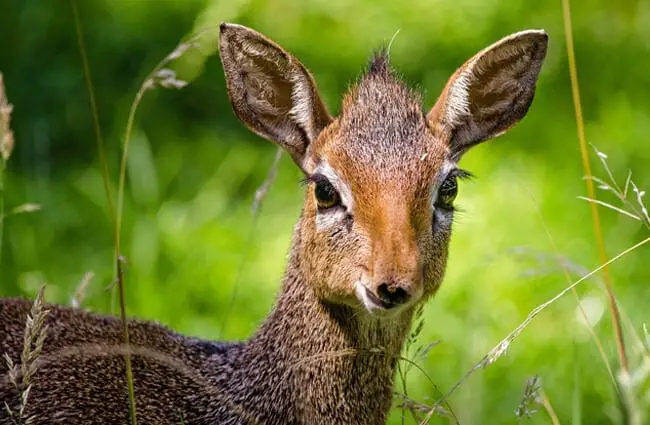
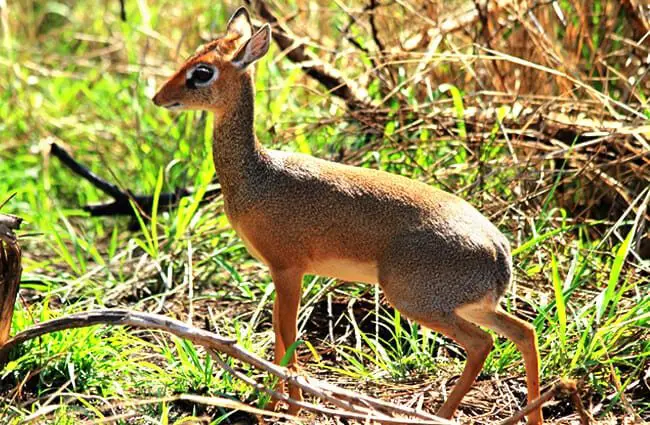




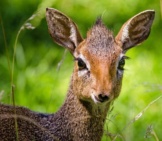
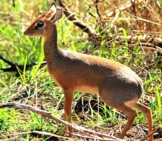
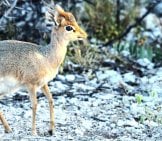
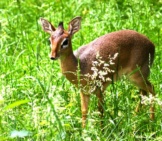
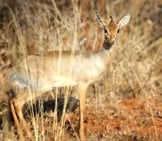
![Red Angus Closeup of a beautiful Red Angus cowPhoto by: U.S. Department of Agriculture [pubic domain]https://creativecommons.org/licenses/by/2.0/](https://animals.net/wp-content/uploads/2020/03/Red-Angus-4-238x178.jpg)












![Red Angus Closeup of a beautiful Red Angus cowPhoto by: U.S. Department of Agriculture [pubic domain]https://creativecommons.org/licenses/by/2.0/](https://animals.net/wp-content/uploads/2020/03/Red-Angus-4-100x75.jpg)

